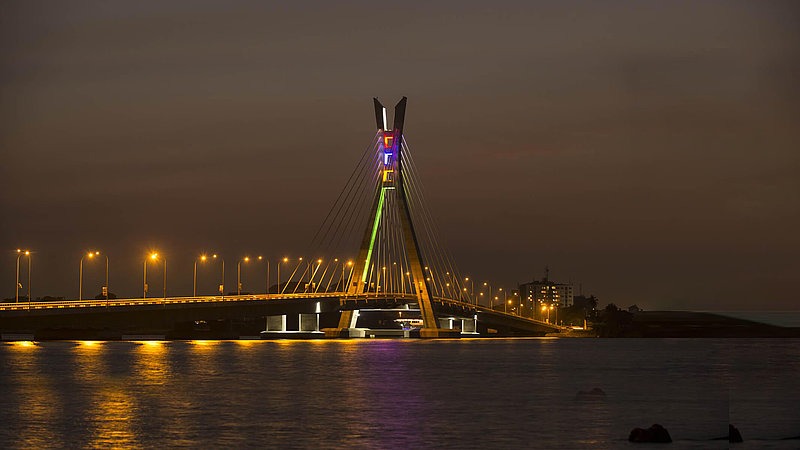The intertwining of locations with storytelling in Nollywood is a fascinating process that offers much more than entertainment. It is an exploration of culture, history, and social dynamics…
By Joseph Jonathan
I have always held the belief that books possess the ability to transport one to different places within their setting. But there is a limit to this conveyance, one that entrusts a scenery only to the limit of one’s imagination. But films expand this journey further, allowing viewers to vividly experience and explore each destination. This is made possible through skillful storytelling and the vibrant depiction of diverse locations within a film. Locations are important in setting the visual and emotional tone of a story, serving to immerse the audience by providing context, enhancing aesthetics, and symbolising themes and/or characters portrayed.
Nollywood, through its captivating stories, vibrant characters, and stunning visuals, has transported audiences to diverse locations across Nigeria, showcasing the country’s rich cultural heritage and breathtaking landscapes. But locations are more than just backdrops; they set the mood and tone for a film’s plot development and shape the characters and their motivations. In some cases, locations could be integral characters that communicate their own stories.
A location, simply put, refers to any place where a film’s production crew will shoot actors and record their dialogues. The setting of a film usually determines the location of the shoot, but it is also common to have films set in one place, but shot in another, as was the case with Biyi Bandele’s Elesin Oba: The King’s Horseman (2022), which was shot in Lagos but set in Oyo Town, but still channelled the historical accuracy of the film’s plot. This occurrence could have been due to funding or convenience.
The choice of a film’s location could extend beyond logistical reasons and can be a reflection of the filmmaker’s vision and inspiration. Filmmakers, often in close relationship with their immediate environment, use their cities as muses; drawing inspiration and amplifying their quirks and wonder. By choosing a certain location, filmmakers pay homage to a community and its people. Director, Babatunde Apalowo revealed in an interview that his film, All The Colours of the World Are Between Black and White (2023) is a love letter to Lagos; a city that inspired and challenged him as a filmmaker.
(Read also: Leading Conversations on Inclusivity, Babatunde Apalowo Takes First Nigerian Queer Film to Berlinale)
Carefully curating locations has evolved into an important aspect of Nollywood, enabling a more engaging and genuine portrayal of the stories being told. Nollywood films have increasingly featured locations that have played a pivotal role in the storytelling, adding layers of depth and authenticity to a story. Kunle Afolayan’s critically acclaimed film, October 1 (2014) is set in the fictional town of Akote, and was shot in parts of Ondo and Lagos. The choice of location was crucial to the vivid portrayal of Akote as a remote and isolated community, creating a sense of suspense and danger that is central to the events, police officer, Danladi Waziri (Sadiq Daba), races against time to resolve a murder mystery before Nigeria’s Independence Day. Being that the film is set in pre-independent Nigeria, the location beautifully captures the tension and uncertainty of Nigeria at the time.
It is no surprise that Lagos remains the go-to location for many Nollywood films, being that it is arguably the entertainment capital of Nigeria. However, the repetitive use of a certain location can affect the appeal of Nollywood films, as it speaks little of our diversity as a nation. When audiences repeatedly encounter the same settings, be it urban scenes, rural landscapes, or specific iconic landmarks, there is a risk of viewer fatigue setting in. It is almost impossible not to find a Nollywood film without shots of the Lekki-Ikoyi Link Bridge, Third Mainland Bridge or Tarkwa Bay. As such, there is a need for Nollywood to move beyond Lagos and explore beautiful sceneries from different parts of Nigeria. Taiwo Egunjobi’s All Na Vibes (2021), for example, was a breath of fresh air as it is set in and shot in the ancient city of Ibadan.

(Read also — “All Na Vibes” Review: An Ambitious Film Loses Its Aspiration to Flimsy Plot)
Similarly, Tope Oshin’s Up North (2018) moved far away from the conventions of Lagos to northern Nigeria. But beyond that, it helped change the perception of people and places within the region. Through its carefully selected locations, it tries to portray northern Nigeria in a better light by showcasing the rich tapestry of life in the region. The film, which was mostly shot in Bauchi with only one week of shooting in Lagos, follows Bassey Otuekong (Bankole “Banky W” Wellington) who is posted to the north for the mandatory National Youth Service Corps (NYSC). The film’s location adds depth to the story as the scenic landscape of Bauchi represents the transformation and self-discovery experienced by Bassey. Through interactions with the local community, Bassey learns valuable life lessons and begins to embrace the essence of unity, humility, and purpose.

But it is also understandable why filmmakers would repeatedly produce films set and shot in only one location. The production cost aside, the general insecurity in the country poses a problem. Sharing his experience on the set of the recently released Netflix film, The Black Book (2023), actor Richard Mofe-Damijo in a post on his Facebook page, revealed that one-third of the crew dropped when it was time to shoot in Kaduna due to scares of the insecurity that is prevalent in the area. This was after a reported attack on the Kaduna Airport by armed men. There are also the bureaucratic hurdles associated with getting access to certain locations. Part of the location scouting process for The Black Book involved director, Editi Effiong, visiting the prestigious Holy Cross Cathedral, Lagos every day for a month and a three-month follow-up before the shoot was approved by the church.
Navigating the complex nature of location scouting is an ongoing struggle for filmmakers aiming to portray diverse Nigerian locations in their films. However, capturing the essence of Nigerian society is crucial for a compelling and relatable cinematic experience. The authenticity of Nollywood’s stories is deeply enriched by the cultural roots embedded in a chosen location for the film. This is because filmmakers are able to draw inspiration from their local communities and then tell the stories of these areas through film. In the same light, there is a need to shift from the overuse of upper-class locations to a more familiar and commonplace environment to make these films more relatable and authentic to audiences. When audiences see familiar surroundings in the film with characters who speak their language, wear their clothes, and celebrate their traditions, they feel more connected to the story.
The intertwining of locations with storytelling in Nollywood is a fascinating process that offers much more than entertainment. It is an exploration of culture, history, and social dynamics. These locations, beyond their picturesque appeal, resonate with the diversity of Nigerian society and it is necessary for filmmakers to explore the variety of scenic landscapes that Nigeria offers.
Joseph Jonathan is a historian who seeks to understand how film shapes our cultural identity as a people. He believes that history is more about the future than the past. When he’s not writing about film, you can catch him listening to music or discussing politics.




